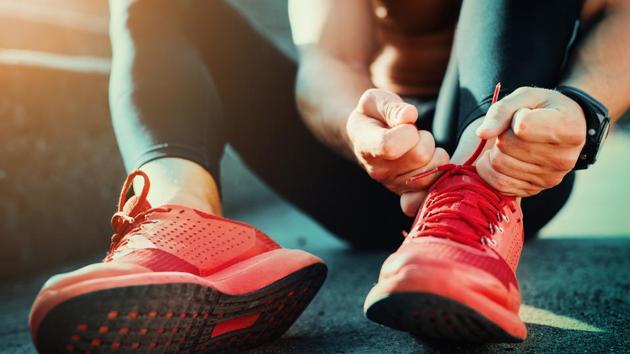How to tackle common running injuries
Even though the commonest pain areas amongst runners are heels, shins, calf and hamstring muscles, knees, glutes (buttocks), and lower back areas, you need to think of yourself as a whole, not just that painful part.
Almost all running injuries are symptoms of other underlying problem(s). Even though the commonest pain areas amongst runners are heels, shins, calf and hamstring muscles, knees, glutes (buttocks), and lower back areas, you need to think of yourself as a whole, not just that painful part.

Once you’ve figured out the why, you need to get on with how to address the problem. And the when starts right now.
Why do running injuries happen?
Unnatural running: The primary cause for most running injuries in people who have picked up running later in life is that running doesn’t come naturally to them. That movement which was effortless as a child seems very strenuous as an adult since you have been sitting on a chair for a decade or more. This leads to poor posture, which then doesn’t let you move the way you did when you were young.
Do strength training: Muscles move your joints. If you don’t address them first, or at least in parallel with starting to run, injuries will inevitably come along. All runners are obsessed with the knees; but the knees are worked by the muscles in your thigh, and are connected in turn to the ankles and the hips. The entire chain has to be strengthened. The common rehab for people recovering from knee injuries involved strengthening the quads and hamstrings, the muscles in your thigh.
Too much too soon: In a very short span after picking up running, we all want to achieve everything, competing with others who probably have been doing it for far longer. That is a recipe for disaster.
Not enough recovery: Rest is even more important than the training itself. There is a reason we all spend almost a third of our lives sleeping. When you train too much without enough recovery in between, your body doesn’t get a chance to adapt. Instead, it soon breaks down.
Poor nutrition: Most think exercising is enough to be healthy but if you don’t consume the right amount and right kind of fuel, you will soon breakdown.
Breathing: How do you plan on running if you can’t even breathe right while sitting, standing or lying? Learn to be mindful of your breathing at rest, take long deep breaths, using your diaphragm and expanding your ribs.
Gear: Your running gear, including your shoes, is over-rated. If you don’t know how to run, no amount of technology in your expensive shoes is enough to prevent you from getting injuries. A good shoe is one that you don’t feel, not the most cushioned or supported.
Running surface: There is no argument that soft ground is better for running and preventing injuries. Try to find grass or running tracks instead of tarmac roads.
How to address running injuries?
Respect your pain: Rushing into getting back too soon so that you can participate in a particular event is a recipe for disaster, soon leading to a long term injury. The plan is to have you running for as long as possible.
Proactive Rest: If you have developed pain during or after running, you need to take a day or two off from running but you should still stay active and do exercises that don’t cause pain.
Exercises: Barefoot walking, skipping, toe curls, heel raises, squats, gluteus maximus activation, pelvic tilts, rhomboids orange squeeze and wall push-ups—these are some of the basic strength exercises you should be doing as a runner. Look them up! There are excellent instructional videos all over the internet.
Medical opinion: If the pain persists for a week, it is good to take a medical opinion, preferably from a doctor or physiotherapist who is active as well.
Investigations: Don’t get investigations done on your own unless advised by a medical professional. X-rays only show bones and most injuries are soft tissue related. MRIs, on the other hand, are super sensitive. Almost everyone above 40 years of age will have abnormal findings on the MRI, most of which are just natural wear and tear and probably have nothing to do with your injury. Let the medical experts decide if there is a need for them.
Hot or cold compress: Apply hot or cold, whichever feels better, wherever the pain is. Have a cloth between the skin and a hot/cold gel pack. Apply it for 5-8 minutes, 4-6 times a day.
Anti-inflammatories: And applying ice and/or heat, help in calming down the pain and getting you to move, but it doesn’t address the underlying problem. So don’t rush back into running just because you feel less achy after taking a pain pill.
((The writer is a sports exercise medicine doctor and a long distance runner))




